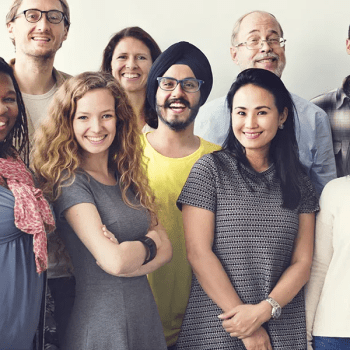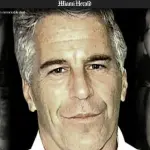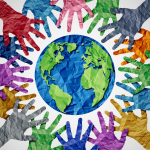Yes, we may be weary of the arguing that has already taken place, fearful of the conflicts that might arise, or doubtful that anything will come of our attempts, but I implore you not to give up trying to talk about it. While the cost in relationships, energy, and status could potentially be significant, the potential for lives to be saved, healing to be had, and hope to be restored is worth any risk you take.” — Bruce Reyes-Chow, from “But I Don’t See You as Asian”
“But I Don’t See You As Asian”: Curating Conversations about Race is the latest self-published book from former Presbyterian Church (USA) Moderator and Pastor Bruce Reyes-Chow. In this candid conversation-starter of a book (perfect for small groups), Bruce opens up sensitive race-related conversations with chapters titled: “Your English is Really Good,” “You All Look the Same,” “I Don’t Mean to Be Racist, But…” and “What Kind of Asian Are You?” (all of which are real statements Bruce has been on the receiving end of), reminding us of the myriad ways racism continues to show up in our relationships and world. Bruce asks us to not give up on the conversation just because it is hard. “When we choose to dismiss or avoid these difficult conversations,” says Reyes-Chow, “we reinforce and remind people of color that they are still the ‘other.'”
“One of the reasons I wrote this book,” Reyes-Chow continues, “is because I truly believe, contrary to what the pundits and politicians would have us believe, that when thoughtful people gather together, we have the capacity to hold passionate, personal, transformative conversations, even about race.”
In this season of Advent, when we seek to make space for God — and the “other” — in our hearts, homes, and conversations, I asked Bruce a few questions about his book on race.
While I have been engaged in conversations about race for my entire life, the real inspiration for the book came after I was asked to speak at Wild Goose West 2012. Wild Goose Festival, an event where justice, spirituality and the arts intersect, was planned by many trusted colleagues who asked me to take an hour to talk about anything I wanted.
Dangerous.
After thinking about this for a while, I chose to talk about race. The demographic that tends to attend these events had been historically White — well-intentioned and faithful, but nevertheless fairly homogenous. But these were also my friends, colleague and companions on this journey of life.
With this in mind, I approached my talk with from the perspective of being part of the larger Body of Christ — one member to another, in love. I did not want to come off as judgemental or wanting people to feel guilty, but simple to share my experience as a person of color in a largely White context.
So . . . I just chose 10 statements that people had said to me over the years, that could provide some context for conversations about race. The talk was well-received and from this, the book was born. Expanded to 22 statements, it’s my hope that by unpacking a few innocuous words, we can continue to have helpful and healthy conversations about race.
What do you think will surprise people about your book?
There is a monster at the end of the book. No really . . .
For those who don’t know me, the big surprise will be the way I try to engage the reader about these conversations. I intended the book to be broadly accessible, but more than that, I try to use humor, my own foibles and a little playfulness to tackle a very serious issue. This is not to soften the message, but to allow room for folks to ease into the conversation as is best for them.
What was the hardest thing about writing this book? What was the most life-giving thing?
The hardest thing was actually writing the book. Seriously, as a longtime blogger, shifting to long-form was a little more difficult than I had anticipated. And while the book is formatted into easily digestible chunks, the discipline of writing was the hard part. Each morning I awoke hoping the author elves did their magic, but alas . . . they never showed.
Live-giving . . . besides being done writing, you mean?
I loved the process of self-publishing. Handling all aspects of the process was a lot of fun and throughout the process, I had a blast. From using Kickstarter to fund the project to trying to figuring the technical aspects of publishing to working with artists, editors, formatters, etc. the entire process was a treat.
A special shout-out to my editor, Laura Garwood Meehan, who handled this author’s fragile ego with great humor, honestly and care.
What does this book have to do with Christmas? (What makes this a great Christmas gift?)
Um, who doesn’t like to get books for Christmas?
While not specifically about Christmas or even about faith, it’s my hope that this will be a book that folks will not only enjoy reading but that it will help them navigate an increasingly diverse and complicated world.
Who do you hope reads your book, and what is the message you hope they take away?
You mean besides Oprah and a million of her closest friends, right?
As I wrote, I had first-year college students in mind. Stepping out of the bubble of childhood and into a wildly new and often more diverse context would be an ideal time to read this book both as an individual. While some are using this as a group study book, I actually hope that folks read this alone so that can begin to craft their own responses to and amidst interactions around race.
As far as a message, it would be that we must all choose to have conversations about race in better ways, that we have the capacity to do so just that AND that we will be better off as a community if we commit to doing so.
This book is available only via Amazon in Hardcopy ($12-ish) and for the Kindle ($9.99). If you buy the hard copy the Kindle version is only $2.99. [But I Don’t See You as Asian on Amazon]














